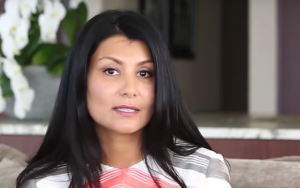Anupama Priyadarshini Nadella is Silicon Valley royalty. She is Microsoft CEO Satya Nadella’s wife and first lady of a multi-billion tech empire. As long-time partner to husband Satya and head of household affairs for the Nadella family, Anu manages what she calls the “extreme controlled chaos” of her household with the steady hand of one who is accustomed to it. She is described as the glue that holds the family together while her husband shapes the next generation of IT innovation.
Anu was born in New Delhi and met her then-future-husband at high school in Hyderabad, India. She went on to study engineering architecture at Manipal Institute of Technology and started working as an architect. Anu and Satya were married in 1992 and moved to Seattle, Washington, shortly thereafter to begin building their lives together.
It was 1996 and the Nadella family was expecting their first child. Anu became concerned about how little the baby had been moving in recent days and a trip to the emergency room ended with an emergency caesarean. Anu gave birth to a three-pound baby boy but because the baby had suffered from in utero asphyxiation, damage had been done during his development.
Baby Zain was diagnosed with severe cerebral palsy, spastic quadriplegia and is legally blind. In his book Hit Refresh, Nadella speaks honestly about how his wife’s unwavering love and commitment to their son profoundly affected how he experienced the changes in their family.
“To say that period of time was difficult is an understatement,” Nadella wrote. “One of the things I remember most clearly, however, is how Anu’s reaction to Zain’s birth was immediately different from mine.”
“For Anu, it was never about what this meant for her – it was always about what it meant for Zain and how we could best care for him. Rather than asking ‘why us?’ she instinctually felt his pain before her own.”
Those first few years were tumultuous for the Nadellas and Anu chose to step back from her career as an architect to care for her son and their two daughters – Tara and Divya – that were born in the years following Zain. One of their daughters was also diagnosed with learning disability serious enough that none of the local schools could help her.
The couple eventually found a school in Vancouver, BC, Canada that focused on finding learning strategies that developed and changed the brain in certain ways. Anu spent five years commuting with her daughter back and forth to attend Eaton Arrowsmith Academy in Canada until the Nadella’s helped establish the school’s Washington branch.
Of the role that technology plays in their family, Anu acknowledges that the couple limit screen time and monitor usage for their children. But it always represents something more to the family because of how it empowers their children with different abilities.
“Technology kept Zain alive,” says Anu. “It means more than just something to waste time on.” Microsoft introduced a new app called Seeing AI that can narrate the world for those with visual impairments. It can help someone like Zain with identifying people, describing scenery, and reading documents that he may not have been able to on his own.
Microsoft’s ‘inclusive design’ has become a core part of the company’s business model since Nadella has taken the helm and 2019 will see an increased focus on accessibility as part of that mandate. Anu’s immediate compassion and support for her son’s health challenges was, in large part, responsible for Nadella’s own views on supporting those with diverse abilities.
Making accessibility mainstream will empower over a billion people to participate more fully in today’s world and Microsoft’s work with artificial intelligence is a cornerstone of developing that technology. MS’s Eye Gaze allows people with quadriplegia to operate a PC with their eyes; the Xbox’s new adaptive controller opened up gaming to people who couldn’t use the more traditional version; and their Autism Hiring Program means tailored interview methods for those with different levels of social cognition.
























